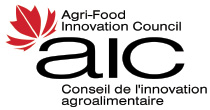It’s time for policy direction in agricultural research
While the agricultural community is interested, engaged and eager to begin developing an agricultural research policy, we have observed that, to date, the politicians are absent from such discussions.
The Hill Times – July 20, 2015 – Agriculture has, in the past few years, taken a back seat to other issues. Research and scientists rarely make it to the top of the political agenda. Agricultural research is not expected to be one of the things that politicians discuss while knocking on doors in the next few months.
However, considering all of the hot dogs, hamburgers, corn-on-the-cobs and fresh salads that our politicians will consume in the coming months along the campaign trail, one could reasonably think that consumers would want to better understand what is at stake in our food chain.
There are many current issues that Canadians care about, but they rarely associate them with “agricultural research”:
Food safety, nutrition and contributions to human health
Climate change and its impact on crops
Soil conservation and remediation (after mining projects, drilling, etc.)
Development of new plant and animal products and uses
We need to start looking at these issues, and others, through a different lens. And that starts by having a serious discussion about agricultural research: its future in Canada, its direction, the stakeholders, and its funding.
We have a changing agricultural landscape.
Producers are now assessing global trends and markets by, amongst other things, looking at grain and oilseeds futures from the Chicago Board of Trade, using new technology such as geolocation tools to plant their crops, and accessing the latest information available to determine what to feed their livestock.
But while most recognize that agriculture has changed, agricultural research still has a perception of not being relevant and is easily dismissed.
Already, very few remember that Canadian scientists (one working for the federal government and the other with the University of Manitoba) developed the edible oilseed plant we know as canola in the early 1970s. Why is this relevant? A study commissioned by the Canola Council of Canada and funded by Agriculture and Agri-Food Canada concluded that canola contributed about $19.3-billion per year to our economy in 2011-2012. It means jobs and exports. It is important for Canada.
Canola is one bright example, but the relevance of agricultural research-direct and indirect-is far-reaching. With over 2.1 million people employed in Canada in the agriculture and agri-food system (according to Agriculture and Agri-Food Canada in 2013), it is important to ensure that the agri-food system has the necessary resources to continue the research that will keep it sustainable, competitive and rewarding for all involved.
Governments have understood the importance of research and innovation. But that has mostly been for the manufacturing, high-tech, automobile industry, and natural resources sectors. There is no real “common strategy” related to agricultural research. There?s no “policy” that provides guidance and direction and that can be used to measure progress.
Progress cannot be measured by the amount of money spent in one place or another. The number of people employed or the number of organizations that have received funding are not the measures of success.
We need to develop short and long-term objectives that are realistic and can be implemented.
Recently, researchers, academics, representatives from commodity groups, government officials and other stakeholders gathered in Ottawa to look at the development of a modern agricultural research policy.
We are all aware that there are competing interests for a dwindling public purse. Health care, education, economic development and security are at the top of the agenda. Therefore this policy will not be a call for more resources-governments will decide, based on needs and public priorities, what is available to support agricultural research in the future.
What we need is for research funding to become more effective. For example, how do we develop public-private-partnerships and include a possible role for producers? What steps should we take to broaden the horizons of interdisciplinary research, to allow more cross-pollination between subject areas? How can we best use pure and applied research to benefit our agricultural sector as a whole?
A policy must be more than a stale piece of paper. If opinions are carefully considered, it is well drafted and properly communicated, it can and will be a useful tool; otherwise it will join the numerous policies that have been relegated to recycling bins and provide only lip service to their respective sectors.
An agricultural policy that will provide a framework and guidance for the future will be useful if we’re able to get all stakeholders to agree. It can also be useful if it is used to measure progress.
While the agricultural community is interested, engaged and eager to begin developing such a policy, we have observed that, to date, the politicians are absent from such discussions.
We hope that, while eating their hot dogs, hamburgers, corn-on-the-cobs and fresh salads while out on the hustings, they will spend a bit of time reflecting on how we get our food, how we can sustain our agricultural industry and what needs to be done to improve research and retain the top researchers in our country.
Lianne Dwyer is chair of the Agricultural Institute of Canada, which hosted its national policy conference in Ottawa last week.
To access the article click here.
